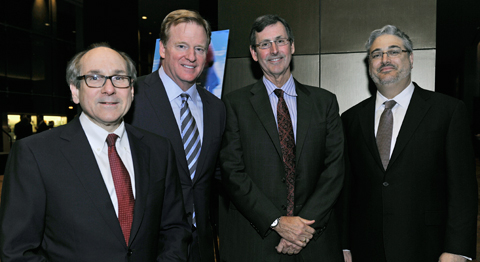About the Institute
The Texas Institute for Brain Injury and Repair at UT Southwestern Medical Center (TIBIR) is a component of the Harold and Annette Simmons Comprehensive Center for Research and Treatment in Brain and Neurological Disorders, and will explore the full spectrum of brain injuries including strokes and spinal cord injuries with a primary focus on traumatic brain injury using a four-pronged approach:
- Innovative neuroscience research
- Clinical translation
- Education and prevention
- Comprehensive clinical care
TIBIR is designed to propel dramatic progress in the understanding and treatment of mild, moderate, and severe brain injuries through high-impact preclinical and clinical research.
Partnerships
The TIBIR initiative is highly collaborative and many organizations, both local and national have come together to find better ways to prevent and treat brain injuries.
- National Institutes of Health
- UT Dallas Center for BrainHealth
- Children's Medical Center
- Scottish Rite for Children
- Dallas VA Medical Center
- Parkland Health & Hospital System
- Texas Health Resources
- Texas Health Ben Hogan Sports Medicine

We also will leverage organizations such as the National Football League (NFL), U.S. Department of Defense, and Texas Association of Athletic Trainers.
History
- The State of Texas has provided funding to support this launch – the largest allocation for this type of brain injury initiative in the State’s history – $15 million per biennium, $7.5 million per year.
- Both the NFL and the Department of Defense testified before the Texas Legislature in support of UT Southwestern becoming a hub for the research and treatment of traumatic brain injuries (TBI).
- UT Southwestern has received intense support from the Texas State Athletic Trainers Association (TSATA). Michael “Spanky” Stephens, its executive director, led a task force of physicians, licensed athletic trainers, and brain trauma researchers and specialist to write HB 2038 (“Natasha’s Law”), which was passed in 2011 and defines concussion and return-to-play protocols for any high school student athlete in Texas. The organization’s ongoing support will be needed, particularly as high schools and athletic trainers are included in research/development of brain injury/concussion database.

